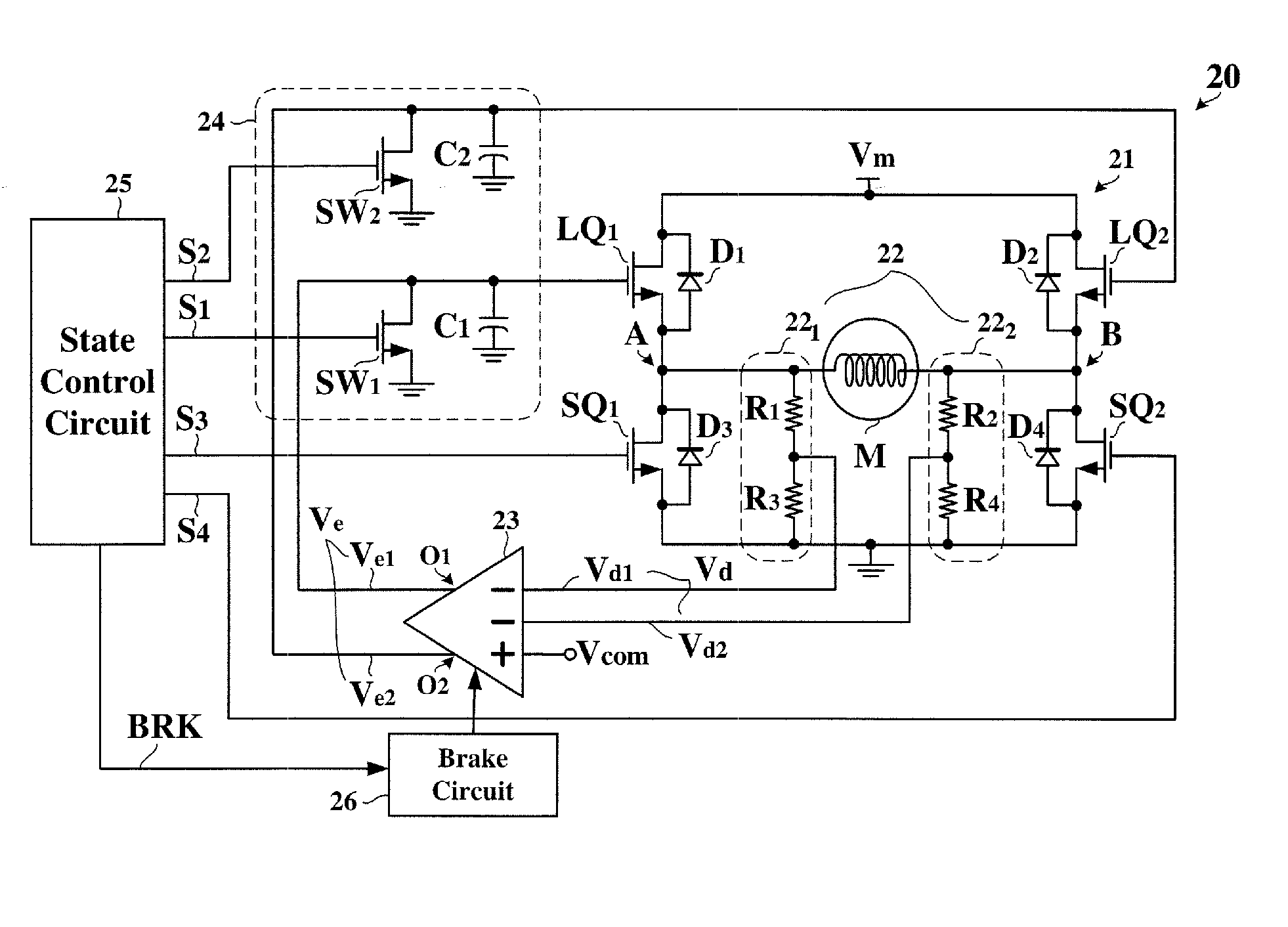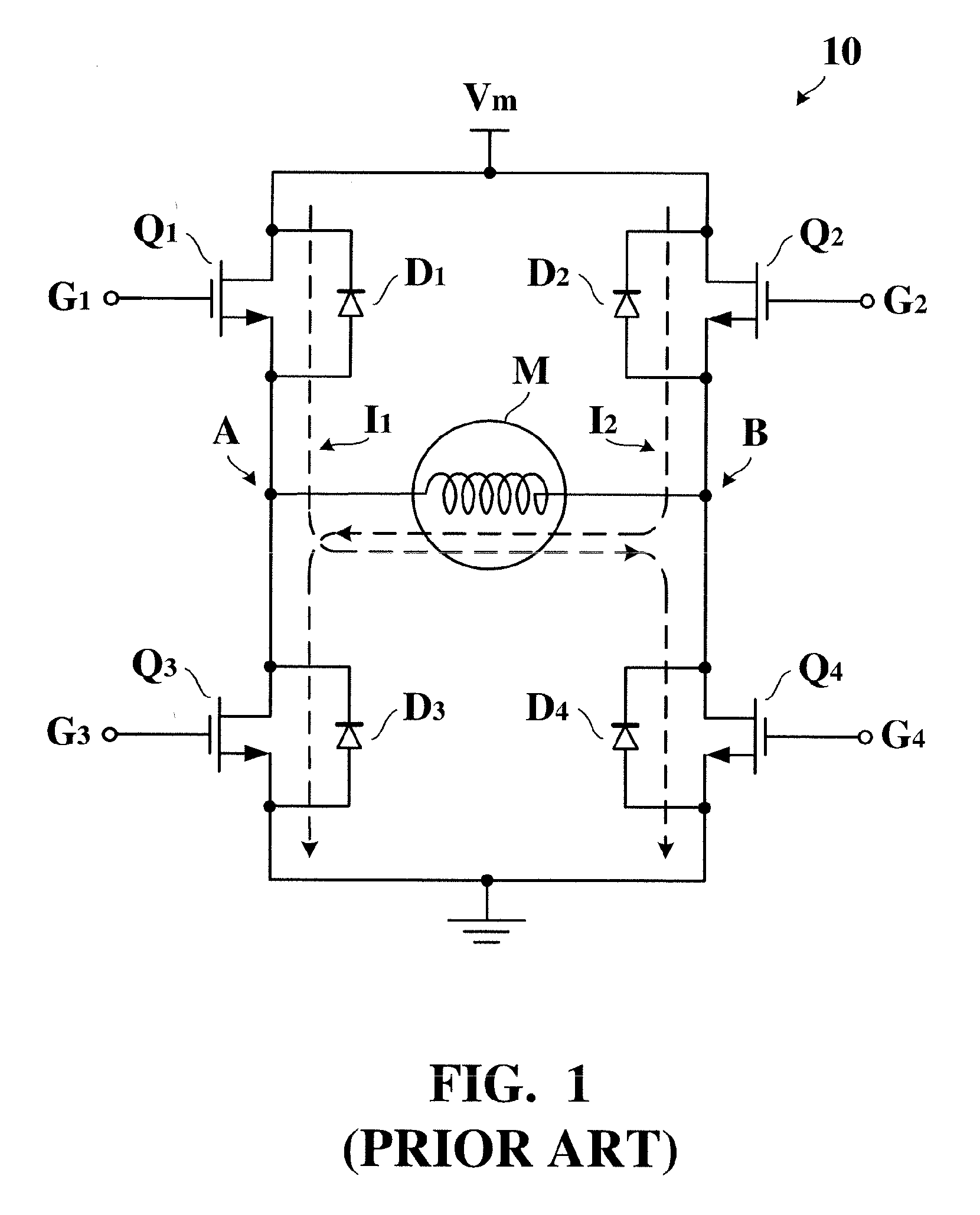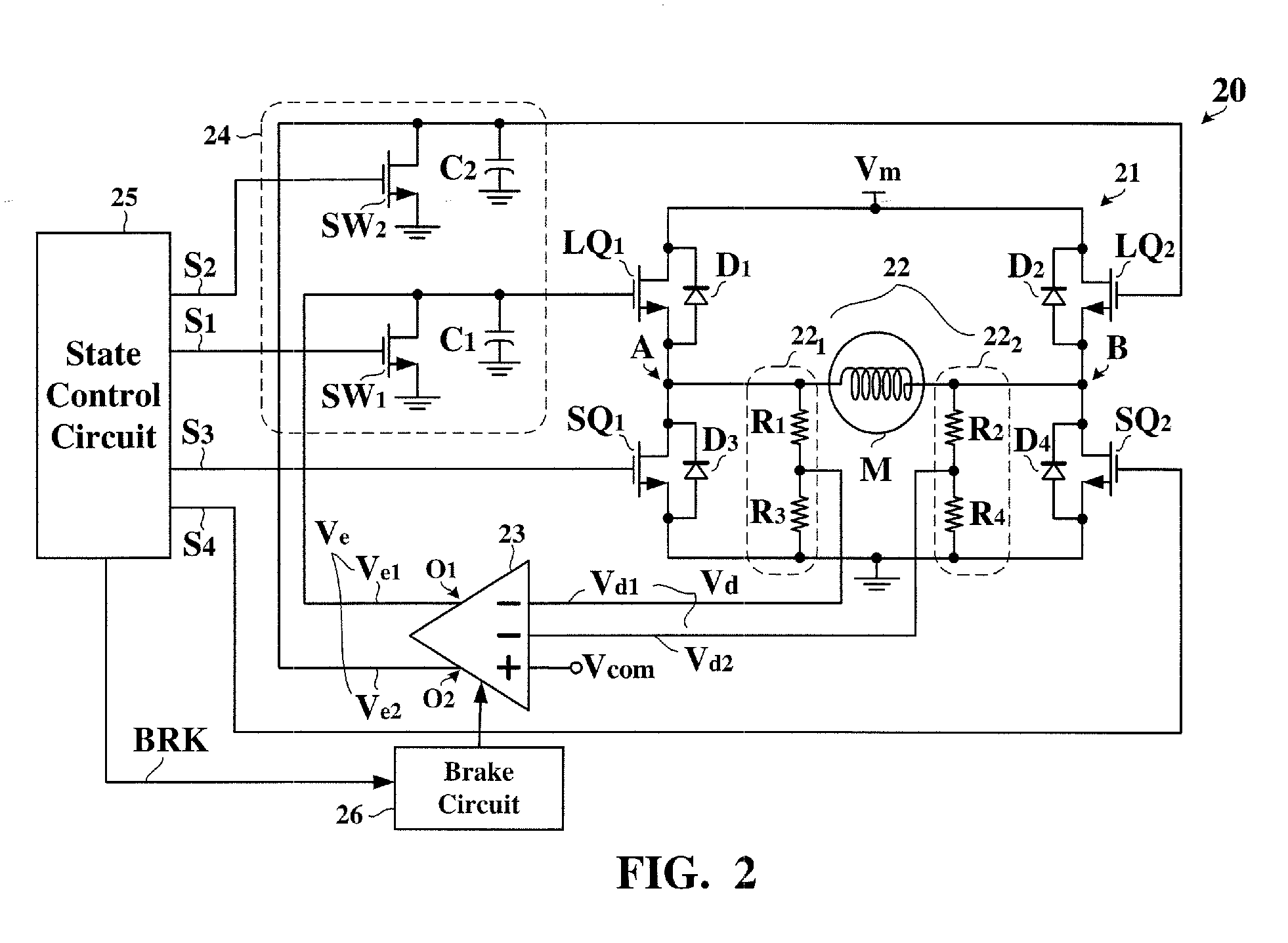Motor control circuit for supplying a controllable driving voltage
- Summary
- Abstract
- Description
- Claims
- Application Information
AI Technical Summary
Benefits of technology
Problems solved by technology
Method used
Image
Examples
Embodiment Construction
[0030] The preferred embodiments according to the present invention will be described in detail with reference to the drawings.
[0031]FIG. 2 is a circuit diagram showing an example of a motor control circuit 20 according to the present invention. Referring to FIG. 2, the motor control circuit 20 includes an H-bridge circuit 21, a voltage detection circuit 22, an error amplifier 23, a feedback circuit 24, and a state control circuit 25.
[0032] The H-bridge circuit 21 includes two linear units LQ1 and LQ2 and two switching units SQ1 and SQ2. The linear units LQ1 and LQ2 couple a supply voltage source Vm and a motor M while the switching units SQ1 and SQ2 couples the motor M and a ground potential. The linear units LQ1 and LQ2 may be operated in a linear mode, a conductive mode, and a nonconductive mode while the switching units SQ1 and SQ2 may be operated in the conductive mode and the nonconductive mode. The term “linear mode” refers to an operational state in which an equivalent res...
PUM
 Login to View More
Login to View More Abstract
Description
Claims
Application Information
 Login to View More
Login to View More - R&D
- Intellectual Property
- Life Sciences
- Materials
- Tech Scout
- Unparalleled Data Quality
- Higher Quality Content
- 60% Fewer Hallucinations
Browse by: Latest US Patents, China's latest patents, Technical Efficacy Thesaurus, Application Domain, Technology Topic, Popular Technical Reports.
© 2025 PatSnap. All rights reserved.Legal|Privacy policy|Modern Slavery Act Transparency Statement|Sitemap|About US| Contact US: help@patsnap.com



